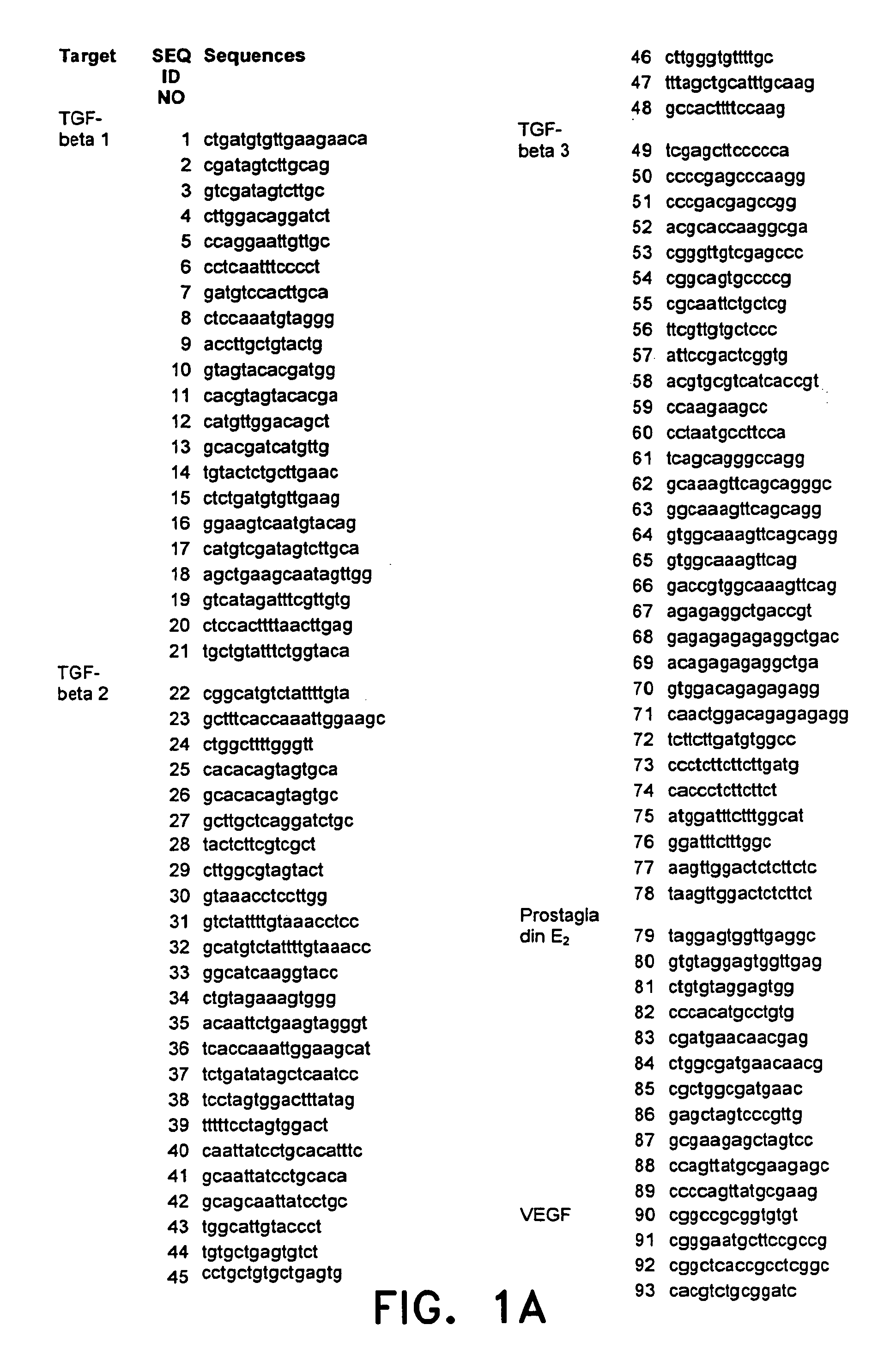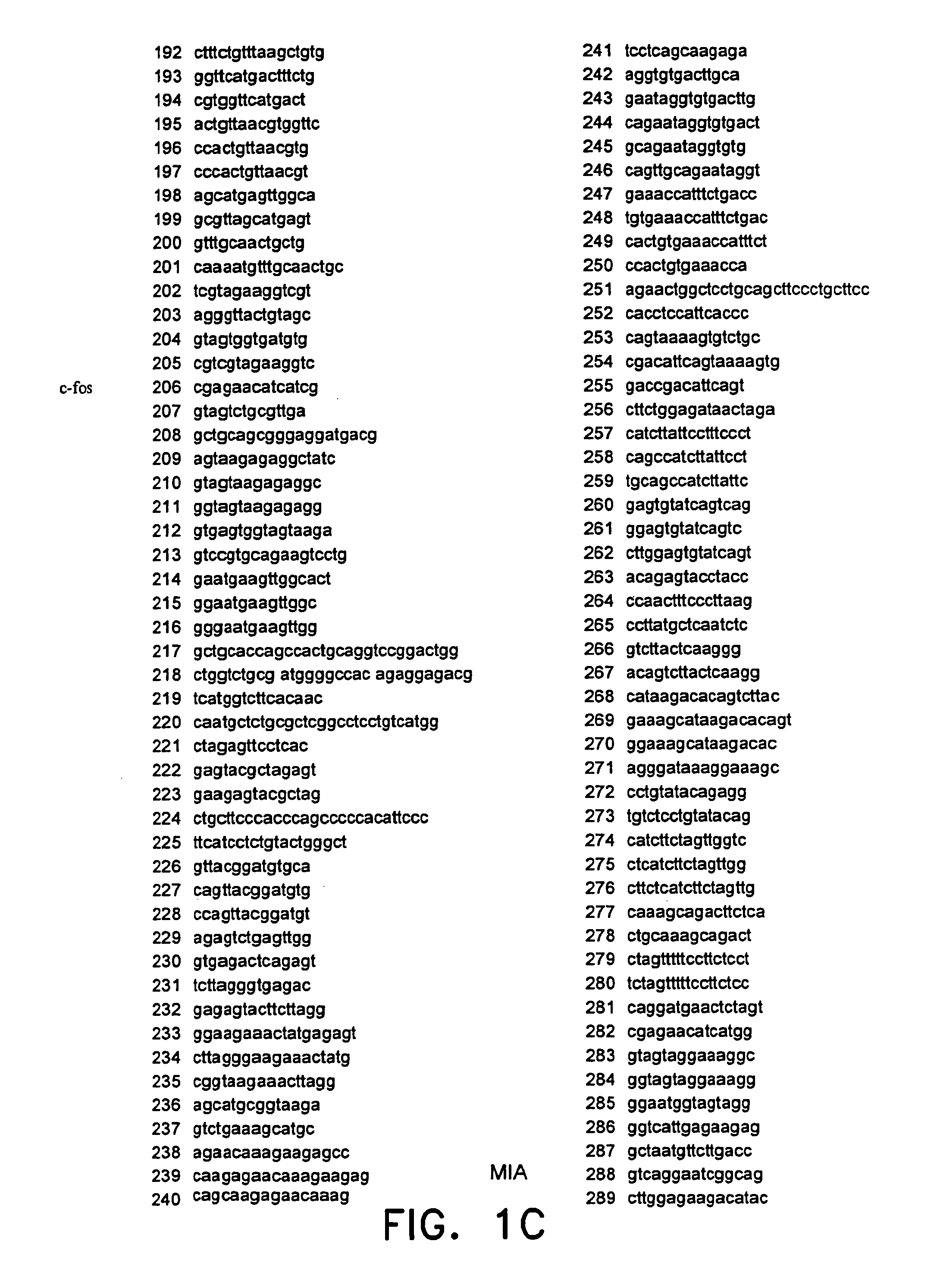Dosage of oligonucleotides suitable for the treatment of tumors
a technology of oligonucleotides and tumors, applied in the direction of biochemistry apparatus and processes, drug compositions, organic chemistry, etc., can solve the problems of rare curative potential, rare treatment options, and almost uniformly fatalities, and achieve enhanced affinity for nucleic acid targets, prolonging the survival of tumor patients, and high efficiency
- Summary
- Abstract
- Description
- Claims
- Application Information
AI Technical Summary
Benefits of technology
Problems solved by technology
Method used
Image
Examples
example 1
Effect of an Antisense Oligonucleotide in a 7-day Treatment Cycle on Pancreatic Carcinoma
[0111]A pharmaceutical composition comprising an antisense oligonucleotide of SEQ ID NO. 22 was administered intravenously as a 2nd, 3nd and or 4th line treatment to a patient suffering from an advanced pancreatic carcinoma, i.e., the patients had been pretreated with one, two or three other tumor therapies. A portable pump was used to infuse the pharmaceutical composition and the antisense oligonucleotide of SEQ ID No. 22, respectively, intravenously at an infusion speed of 0.8 mL / h via a pre-implanted port access system. Alternatively, the pharmaceutical composition and the antisense oligonucleotide of SEQ ID No. 22, respectively, were administered intravenously with a syringe.
[0112]The pharmaceutical composition comprising the antisense oligonucleotide of SEQ ID NO. 22 is administered intravenously in 1 to 10 treatment cycles, wherein one cycle consists of 7 days, followed by a 7-day treatmen...
example 2
Effect of an Antisense Oligonucleotide in a 4-day Treatment Cycle on Pancreatic Carcinoma
[0120]In another experiment, the pharmaceutical composition comprising the antisense oligonucleotide of SEQ ID NO. 22 is administered intravenously in 1 to 10 cycles, wherein one treatment cycle consists of 4 days, followed by a 10-day treatment free interval.
[0121]16 patients were enrolled in four cohorts, which were treated with increased doses of SEQ ID NO. 22:
[0122]Cohort A1: 5 patients received 140 mg / m2 / d
[0123]Cohort A2: 3 patients received 190 mg / m2 / d
[0124]Cohort A3: 5 patients received 250 mg / m2 / d
[0125]Cohort A4: 3 patients received 330 mg / m2 / d.
[0126]Patient 1 of cohort A1 was a 65 years old man, who died 5.5 months after start of treatment, patient 2 was a 50 years old woman, who died 15.6 months after start of treatment, patient 3 was a 44 years old man, who died 4.9 months after start of treatment, and patient 5 was a 63 years old woman, who died 13.4 after start of treatment. Patient...
example 3
Successful Use of an Antisense Oligonucleotide for the Preparation of a Pharmaceutical Composition for the Treatment of a Pancreatic Carcinoma
[0130]A 54-year old male patient with a medical history including diabetes mellitus, arterial hypertension, lymphatic edema, teratoma of the left testis, was diagnosed with pancreatic cancer AJCC (American Joint Committee on Cancer) stage 1. Histology showed a ductal Grade 2 adenocarcinoma. The patient immediately underwent a surgical resection of the tumor (Whipple's procedure, resection grade R0) and received three chemotherapy regimens (containing 5-fluorouracil, leucovorin, and gemcitabine).
[0131]After tumor recurrence with metastatic liver metastases based on metastatic pancreatic carcinoma, the patient was treated with a pharmaceutical composition comprising the antisense oligonucleotide of SEQ ID 22 in a dose of 80 mg / m2 / d over 7 days representing one cycle of treatment. The patient underwent 7 cycles of a 7-day treatment period, wherei...
PUM
| Property | Measurement | Unit |
|---|---|---|
| time | aaaaa | aaaaa |
| time | aaaaa | aaaaa |
| time | aaaaa | aaaaa |
Abstract
Description
Claims
Application Information
 Login to View More
Login to View More - R&D
- Intellectual Property
- Life Sciences
- Materials
- Tech Scout
- Unparalleled Data Quality
- Higher Quality Content
- 60% Fewer Hallucinations
Browse by: Latest US Patents, China's latest patents, Technical Efficacy Thesaurus, Application Domain, Technology Topic, Popular Technical Reports.
© 2025 PatSnap. All rights reserved.Legal|Privacy policy|Modern Slavery Act Transparency Statement|Sitemap|About US| Contact US: help@patsnap.com



